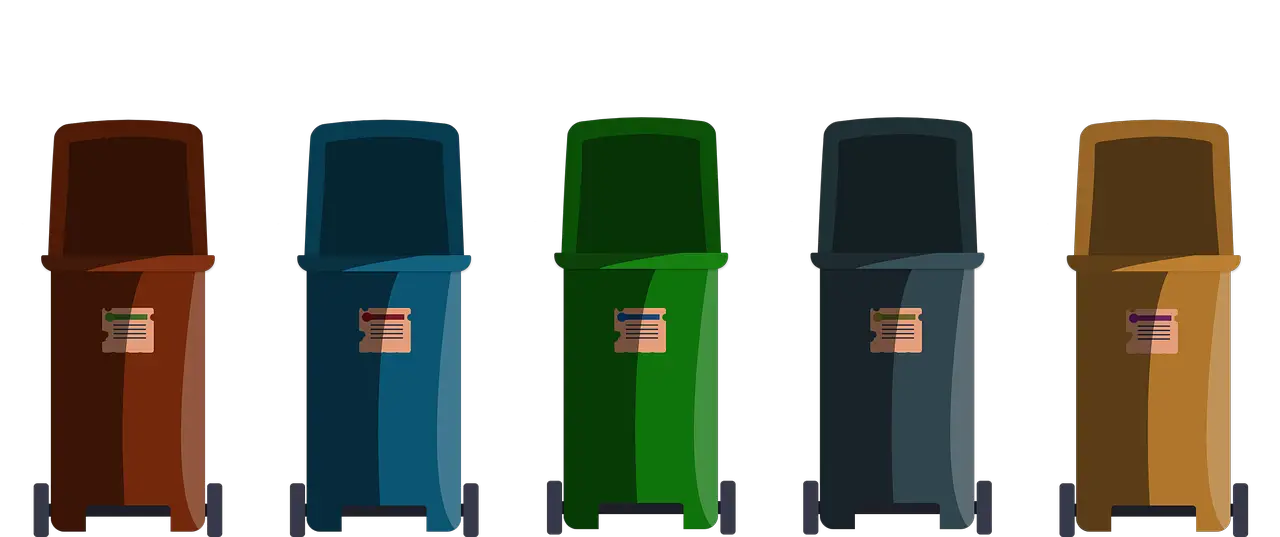Landfills are one of several major waste management options we use in society.
In the guide below, we list some of the different alternatives to landfill that might be implemented as part of an overall waste management strategy.
Summary – Alternatives To Landfill
Alternatives To Landfill
Some of the alternative waste management options to landfill might include:
Reduce Waste (or eliminate it)
Re-Use, Repurpose, Upcycle/Downcycle, Or Repair Waste
Anaerobic Digestion
Mechanical Biological Treatment
Pyrolysis
Plasma Arc Gasification
Note that the above list is not a complete list, but rather just some of the main options.
New technologies and options are always being developed and introduced too.
What’s The Best Waste Management Option
The best waste management option ultimately depends on a range of factors.
Note that some options are available only to municipal waste, and not industrial or commercial waste and vice versa.
There can also be specialist treatment and waste management for hazardous waste, or, specific landfills for hazardous waste.
Type of waste is one of the variables in determining what the best waste management option is, or what waste management options can be used.
The Different Alternatives To Landfill
Reduce Waste
The first step in the waste hierarchy, which is to reduce the amount of waste getting into the waste stream in the first place.
It can involve both producers/suppliers and consumers reducing their waste.
As one example, produces/suppliers might find ways to reduce the amount of packaging they use to transport and deliver products to the consumer.
As another example, consumers might buy less in general, buy products with less packaging, or buy products that last longer and don’t have to be replaced as frequently.
Cutting down on food loss and food waste as further examples for both producers and consumers.
Re-Use, Repurpose, Upcycle/Downcycle, Or Repair Waste
A key part of a more circular economy might be to re-use resources, instead of disposing of them and having to source and use mainly virgin/new materials.
Plastic for example can be re-used and repurposed, and glass can also be repurposed.
For consumers, buying clothes second hand is an example of re-using.
Also for consumers, getting a computer or phone repaired instead of throwing it out is a way to keep that product in circulation instead of it becoming waste.
Composting
Composting involves disposing of organic material separately to non-organic, non compostable material and waste.
Aside from the benefits of organic matter being able to biodegrade and create a compost mix, composting means that there is less chance of food waste contaminating plastic waste which might be able to be recycled.
Recycle (& Recovery) Of Waste
Recycling is breaking materials and resources down to re-use them again in recycled products.
Some materials and products are recyclable, while some aren’t. Different types of plastic are an example of this.
Metals like aluminum are an example of a highly recyclable material, whilst glass is usually not.
Plastics and paper can also only usually be recycled a certain number of times before the fibres that make them up begin to weaken and shorten – leading to a lesser quality recycled product.
Waste-To-Energy Incineration
Incineration [is the] combustion of organic material such as waste with energy recovery … [it] is the most common [waste to energy strategy] (wikipedia.org)
Anaerobic Digestion
From biogen.co.uk:
Anaerobic digestion is the process by which organic matter such as animal or food waste is broken down to produce biogas and biofertiliser.
This process happens in the absence of oxygen in a sealed, oxygen-free tank called an anaerobic digester.
Mechanical Biological Treatment
From ciwm.co.uk:
MBT describes a number of different processes dealing with the biological treatment of waste.
It is the combination of both biological and physical processes, which can be arranged in a number of different ways. [it’s a way of] diverting biodegradable municipal solid waste from landfill
From wikipedia.org:
A mechanical biological treatment system is a type of waste processing facility that combines a sorting facility with a form of biological treatment such as composting or anaerobic digestion.
MBT plants are designed to process mixed household waste as well as commercial and industrial wastes
Pyrolysis
From wastenet.net.au:
Pyrolysis involves the thermal decomposition of organic material in an oxygen-free or low oxygen environment.
Pyrolysis generates three main products; char, oil (‘pyrolysis oil’) and gas – in varying ratios depending upon the composition of the waste materials fed into the pyrolysis reactor and process conditions.
The two terms [pyrolysis and gasification] are often used in tandem, since there are many Pyrolysis/Gasification technologies which apply the two processes in series.
Gasification
From wastenet.net.au:
Gasification is the process whereby most of the char, tar and volatile gas resulting from pyrolysis are converted into a more useful combustible gas (syngas) by a reaction with steam, with or without air
From wikipedia.org:
Several types of gasifiers are currently available for commercial use: counter-current fixed bed, co-current fixed bed, fluidized bed, entrained flow, plasma, and free radical
Sources
1. http://www.biogen.co.uk/Anaerobic-Digestion/What-is-Anaerobic-Digestion
2. https://en.wikipedia.org/wiki/Landfill
3. https://en.wikipedia.org/wiki/Waste-to-energy#Incineration
4. https://en.wikipedia.org/wiki/Mechanical_biological_treatment
5. https://www.ciwm.co.uk/ciwm/knowledge/mechanical-biological-treatment.aspx
6. https://www.wastenet.net.au/pyrolysis-gasification.aspx
7. https://en.wikipedia.org/wiki/Gasification#Processes
','' ); } ?>